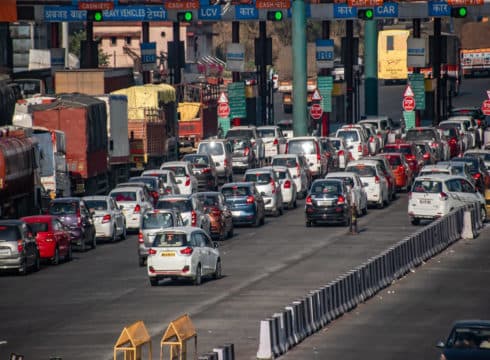NHAI’s revenue swells up around 40% after FASTag introduction
The deadline for switching to FASTag has been extended by a month
Almost 50% of the collection was done through FASTags on day one
Inc42 Daily Brief
Stay Ahead With Daily News & Analysis on India’s Tech & Startup Economy
The daily toll income for the National Highway Authority of India (NHAI) has skyrocketed due to the introduction of FASTag cards on December 15. The revenue has reportedly swelled up around 40% to Rs 85-80 Cr as compared to the average figure of around INR 60 Cr. This is in spite of RBI yet to exempt KYC norms for FASTag cards.
While the deadline for mandatory FASTag has been extended by a month, the first day of introduction, which is December 15, saw more than half the commuters using it. Despite the average waiting time increasing by 2 minutes, almost 50% of the collection was done through FASTags and there were around 19.5 lakh transactions.
What Is FASTag And How It Helped NHAI
FASTag, an electronic toll collection system run by NHAI, deploys radio frequency identification (RFID) technology for making toll payments directly from the prepaid or savings account linked to it. The data-intrusive centralised system ensures seamless traffic and prevent congestion at toll plazas by allowing automatic deduction of toll charges.
The tag is fixed on the windscreen of the vehicle and allows users to drive through toll plazas without stopping for transactions. Once the vehicle crosses a toll users will receive an SMS with details of deduction. Around 7.5% cashback offers were also provided to promote the use of FASTag.
- RFID is a wireless communication that uses electromagnetic or electrostatic coupling in the radio frequency portion of the electromagnetic spectrum to uniquely identify an object, animal or person.
- They are mainly used in healthcare, manufacturing, inventory management and retail sales
- One of the more common uses of RFID technology is through the microchipping of pets, or pet chips.
- RFID is very similar to barcode technology. However, data stored in RFID tag can be updated unlike barcode which can only read data.
- RFID comes in two types. One is an active RFID tag, which runs on power source. Another is passive one, which doesn’t require any battery. And receives its power from antenna.
Why FASTag Has Been Implemented
The RFID-powered technology not only ensures NHAI continues to decongest tolls but it also helps the body make profit with seamless collections and fewer dropouts. For instance, the technology enables NHAI to keep an eye on low-balance. Tolls can flag and blacklist tags with low-balance and update the same every 15 minutes.
Additionally, road transport and highways minister Nitin Gadkari has announced that vehicles running without the FASTag after January 1, 2020, will be charged twice the normal rate at the toll gates thereby making the switch to technology mandatory.
How To Recharge Or Get New FASTags
Around 560 plazas under the National Highways Authority of India (NHAI) will collect toll through FASTags. The initial plan was to roll-out FASTags across all lanes. Currently, the ministry has said that one hybrid lane will continue to accept cash and has restricted payment with cash to around 25 percent lanes of toll plazas.
Valid for five years, FASTag can be bought through Amazon, Paytm, and Airtel app. Additionally, it can be bought at point of sale (PoS) locations set up by 23 banks and the NHAI at Road Transport Authority offices, transport hubs, bank branches, and select petrol pumps.
Users have to pay a one-time fee of INR 100 in addition to a refundable security deposit of INR 200 to buy. The cashback of INR 150 will be credited to the user as wallet value if the FASTag is linked to the NHAI e-wallet in the My FASTag app. Users have to top up a minimum of INR 200.
When India Got FASTags
“Electronic Toll Collection (ETC) has been operational in Europe since 1987 and in the U.S. since 1990. Today, such systems collect more than 50% of all toll revenues, and for some systems, the figure is close to 80%,” says National Payments Corporation Of India.
The Ministry of Road Transport and Highways (MoRTH set up a committee headed by Nandan Nilekani to study electronic toll collection systems in 2010. The committee analysed various technologies and came up with a roadmap for the project.
“Greater issuance, acceptance and awareness about a service that reduces on-road time considerably will drive penetration for ETC tag adoption among the masses. This will not only help the end consumer but create an opportunity for new age thinkers to carve profitable business models,” the NPCI report says.
Nationwide implementation of ETC toll plazas is likely to open up multiple business opportunities and FASTags can be looked for other use cases such as payments for parking, fuel transactions, and traffic fines and other enforcements.
{{#name}}{{name}}{{/name}}{{^name}}-{{/name}}
{{#description}}{{description}}...{{/description}}{{^description}}-{{/description}}
Note: We at Inc42 take our ethics very seriously. More information about it can be found here.


